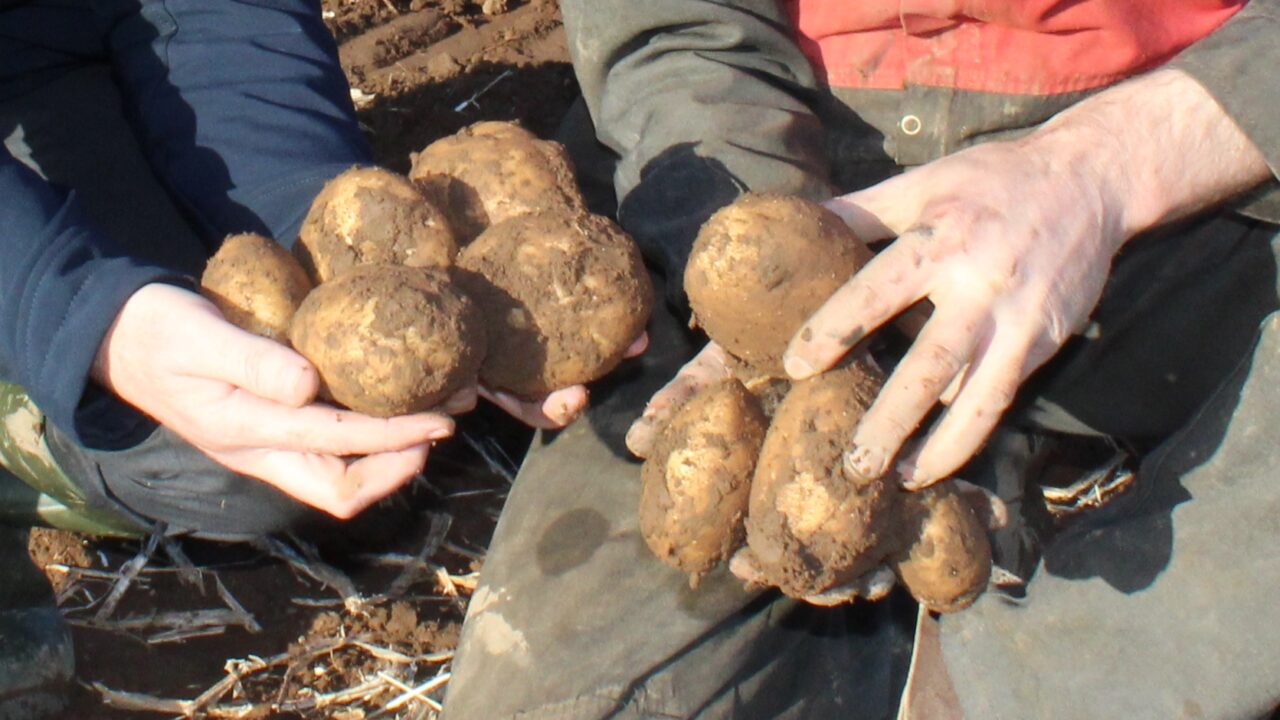The goal of breeding blight-resistant potatoes has been a much discussed issue, going back over many years.
Some breeders have pushed the boat in this direction and came up with new varieties that offered some levels of inherent defence against blight attack.
But the commercial weakness of these potatoes, specifically where yield and taste where concerned, ruled them out as genuine, mainstream contenders at farm level.
Meanwhile, growers have been happy enough to use the armoury of blight chemicals available to them, pushing on with existing varieties on the basis of the yield and eating quality potential they offer.
But that was then. Today, blight is fighting back like never before with new, fungicide-resistant variants that are giving the potato sector across Europe sleepless night.
The now infamous EU43 variant of phytophthora infestans is a case in point.
The current Teagasc advice on how best to protect potato crops against these new variants centres on growers ‘throwing the kitchen sink’ at the problem… utilising the full range of blight chemistries available in a bewilderingly complex manner.
Blight-resistant potatoes
So in essence, we are looking at 14 spray applications, each seven days apart. In addition, products with similar modes of action should not be used sequentially.
To be honest, one would need a qualified mathematician to work out the detail of the various blight control programmes now being discussed.
Complexity of spraying is one thing; the cost associated with this approach to blight control is another issue.
Fungicides are expensive enough at the best of times. So one can only wonder at the costs now confronting potato growers as they set out on their 2024 blight control programmes.
And, of course, all of the extra costs associated with this commitment on the part of farmers will be passed on to the consumer.
Meanwhile, blight organisms will continue to evolve and we could soon find ourselves with no chemical weapons left to fend off their attack.
And where would this scenario leave the Irish potato sector? It’s a scenario that doesn’t bear thinking about.
The only viable answer is to develop new potato varieties that are truly blight resistant.
Teagasc broke new ground when it introduced Rooster to the world. I sense we need a breakthrough of similar magnitude, where the development of blight-resistant potatoes is concerned. And the clock is ticking.
In truth, the challenge is such that international cooperation and real investment will be required to get us over line.
We may also need to look at the use of genetically modified (GM) breeding techniques as a means of fast-tracking genetic selection within relevant potato strains.
But the bottom line here is a very simple one to grasp – if phytophthora infestans wins the war, the Irish potato sector ceases to have a future.
